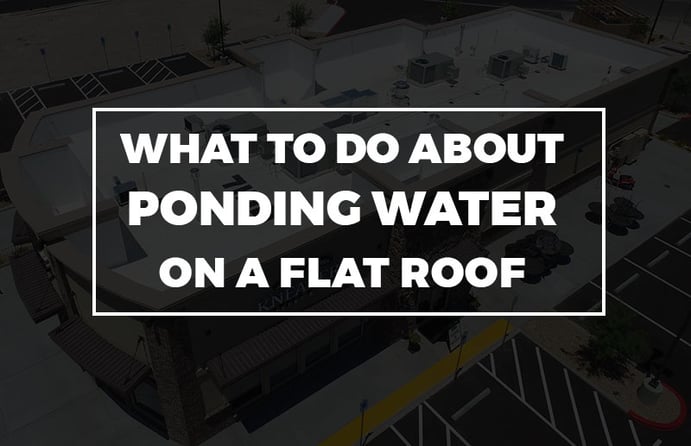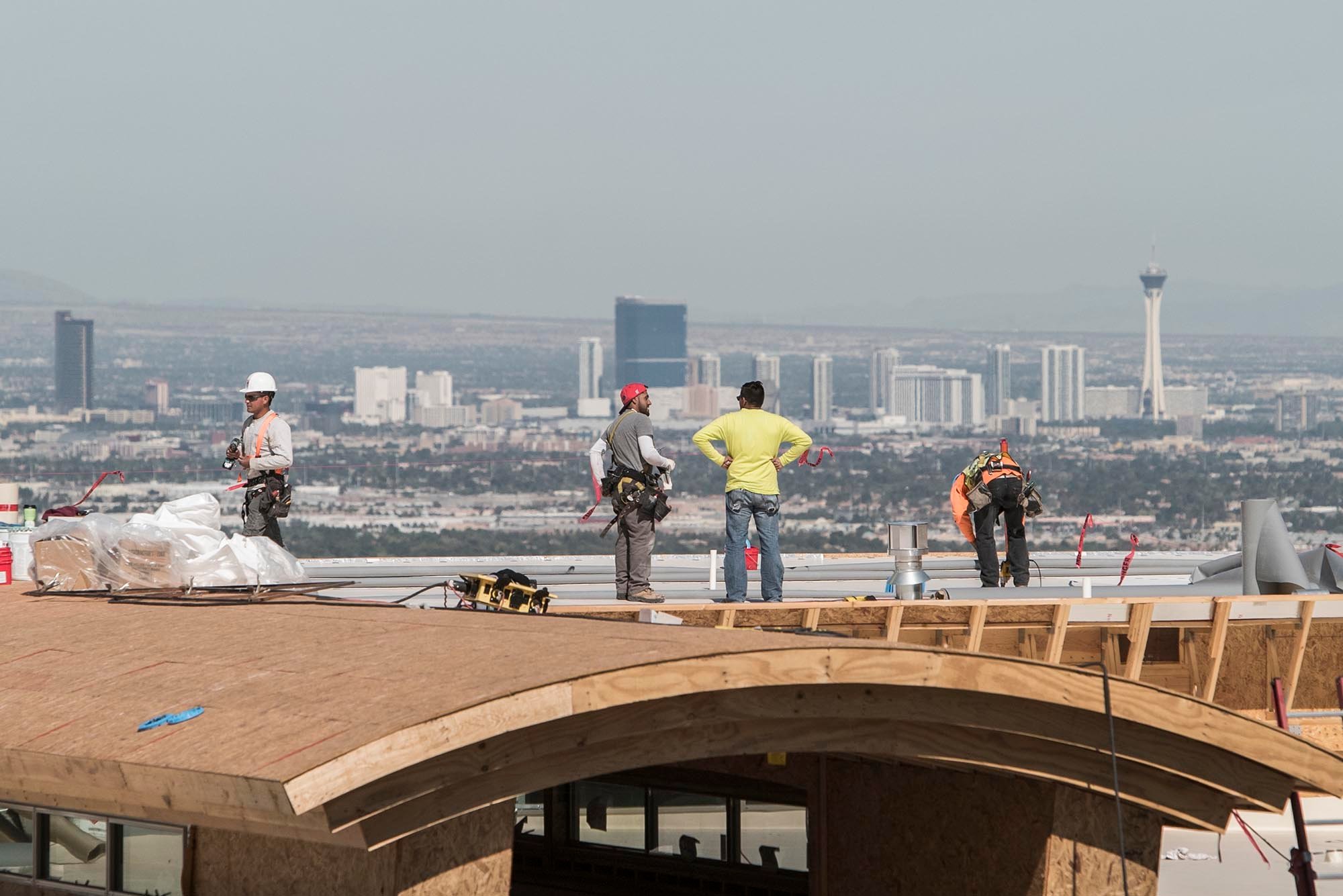
Commercial property owners and building managers face many challenges in protecting a real estate investment. When the building has a flat roof, there are additional problems such as ponding water. This is usually due to poor drainage systems which can cause long-term roof damage. However, with proper roof maintenance, you can keep the building in good working condition, prevent costly repairs, and protect your investment.
Should Flat Roofs Have Puddles?
Puddles or ponding water is water from rainstorms and snow melts that collects on a flat roof and doesn’t drain or evaporate after 48 hours. The water pools after days or hours of steady precipitation due to a variety of causes such as a clogged drain or structural issues that inhibit drainage. A roof should not have puddles because roofs are not designed to hold the weight of a large amount of water.
Long-Term Effects of Ignoring Ponding Water on a Flat Roof
By ignoring long-term ponding water on a commercial flat roof, you increase the odds of having serious roofing problems. It’s best to check the roof after a heavy rainfall to see if there are drainage problems, and, if there are, it’s important to resolve them as soon as possible. In worst case scenarios, the weight of serious ponding water can cause structural damage of the building or to a roof collapse.
To keep your property safe, you need preventative maintenance on a regular basis. Instead of doing the work yourself, you should hire a roofing contractor to maintain the roof and avoid costly repair jobs.
The ponding or standing water can:
- Reduce the longevity of the roof
- Increase exposure of the ponding area to damaging ultraviolet rays
- Collect dirt
- Lead to faster deterioration of the roof’s coatings and materials
- Encourage growth of vegetation such as moss, algae, and plants
- Lead to a leaking and/or sagging roof
- Attract mold and insects
- Damage the interior of the building
How to Stop Ponding from Happening
When it comes to preventing ponding water on a flat roof, there are many solutions a roofing contractor can suggest after examining the roof.
Fixing Low Spots on Flat Roofs
Flat roofs have subtle slopes to facilitate drainage. If there are low spots on the roof, this makes it easier for water to pool and not drain. These low spots can be filled in with roof plaster to reduce the depth of the area by 1 or 2 inches. Installed by a professional contractor, the plaster fills in the low spots and makes it possible for water to move towards the drains.
Opening or Unclogging Existing Drains
The easiest way to prevent water ponding is to clean the drains, rain gutters, and downspouts on the roof. By removing debris such as leaves, sticks, and branches, the water can flow more easily from the roof.
Install Additional Drains to Redirect Water
In some areas with high precipitation, the flat roof may not have enough drains for the amount of water pooling on the roof. Installing additional drains will help to redirect the water and get it off the roof. Another option is to widen the drains that are already on the roof so that more water can flow through them.
Repitching the Roof
With some flat roofs, the pitching may not have been done properly the first time. Pitching is the slope of a roof, and without slope, even a low one, water can’t drain. Repitching your roof is one of the most complicated ways to reduce ponding water and should only be done by a qualified roofing contractor.
Without preventative commercial roof maintenance, a flat roof is susceptible to ponding water which can invalidate a warranty, ruin a building’s structural integrity, and result in expensive repairs. By taking steps to prevent ponding water on a flat roof, property owners and building managers can keep the property in good condition while increasing its value.






